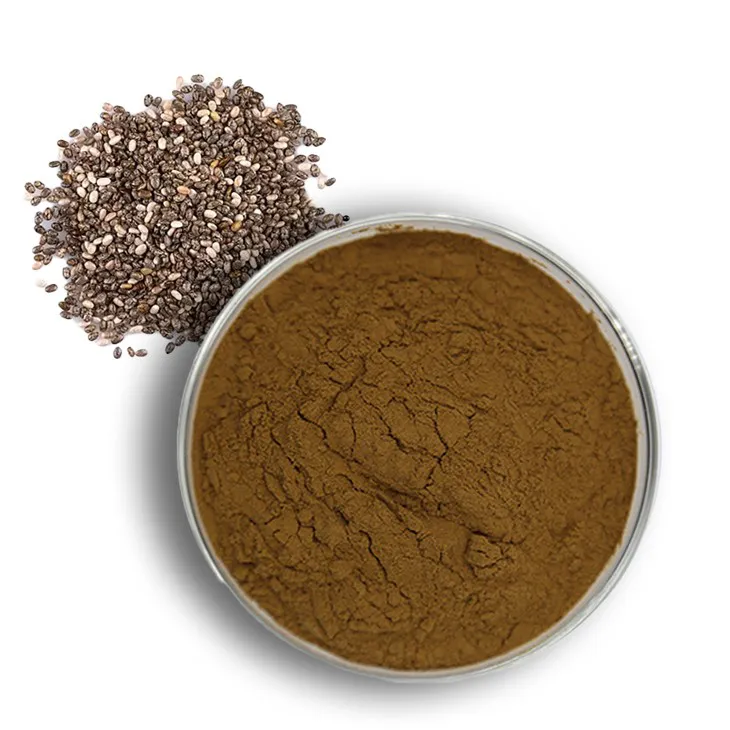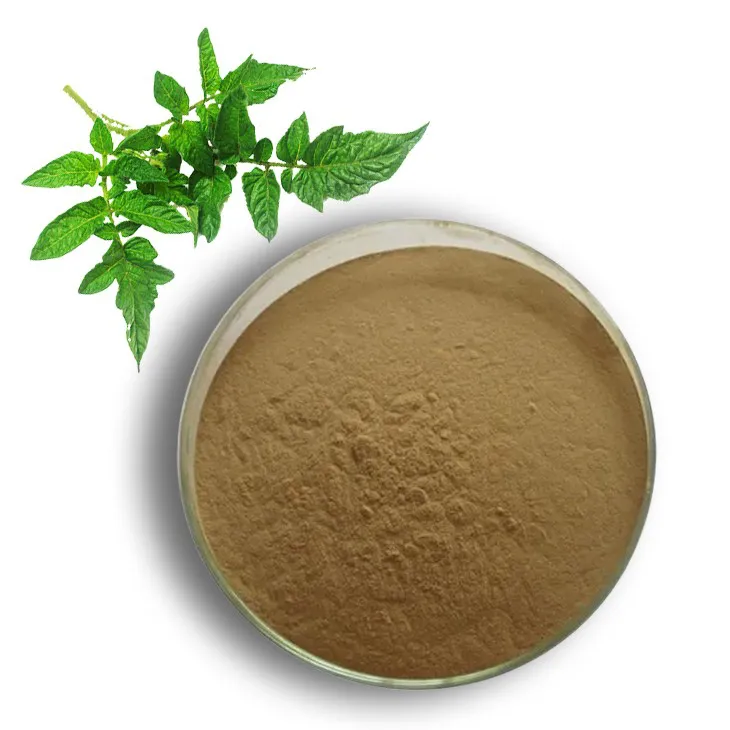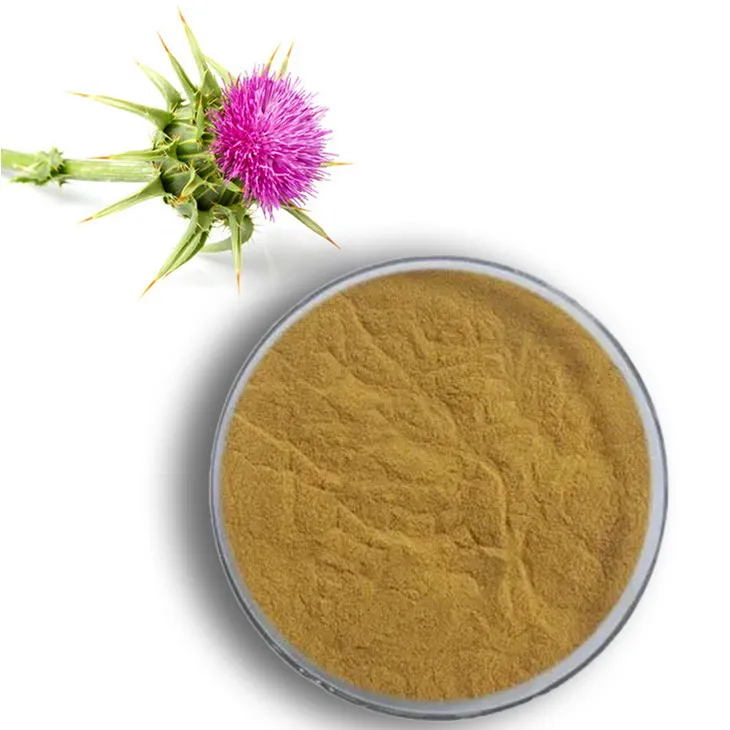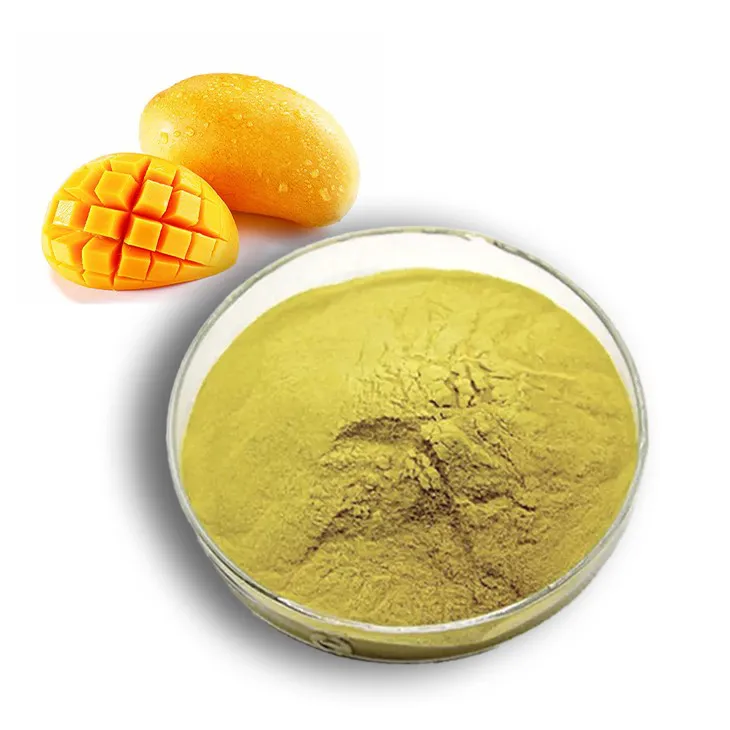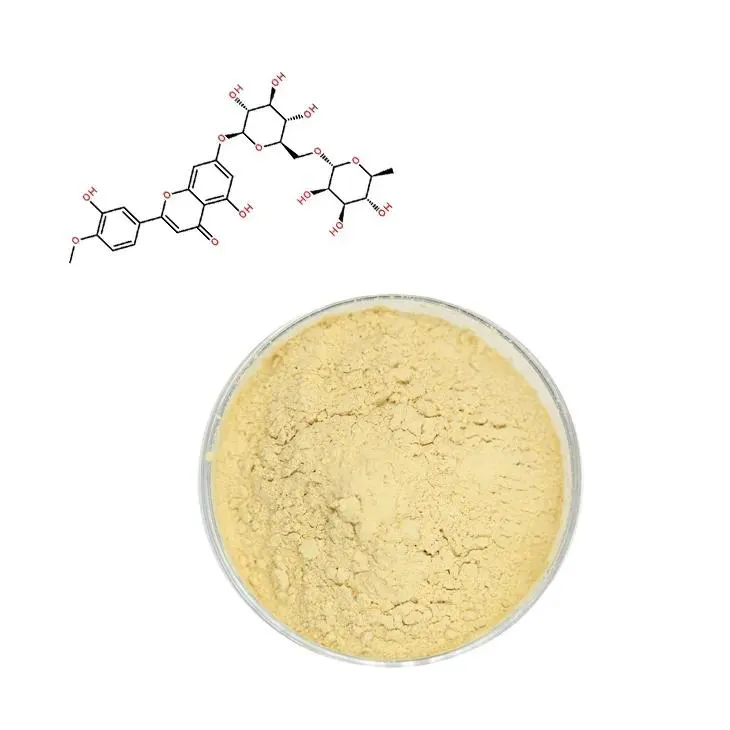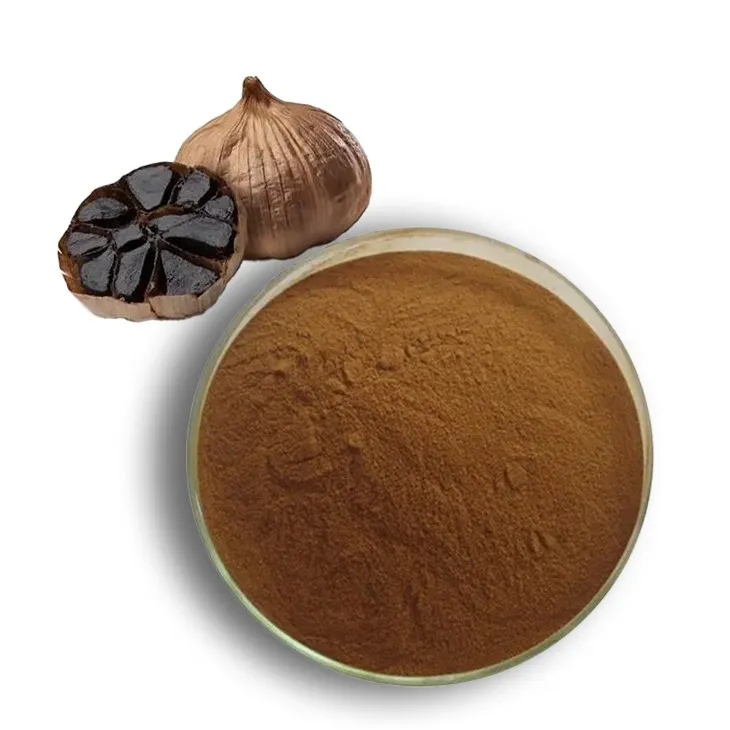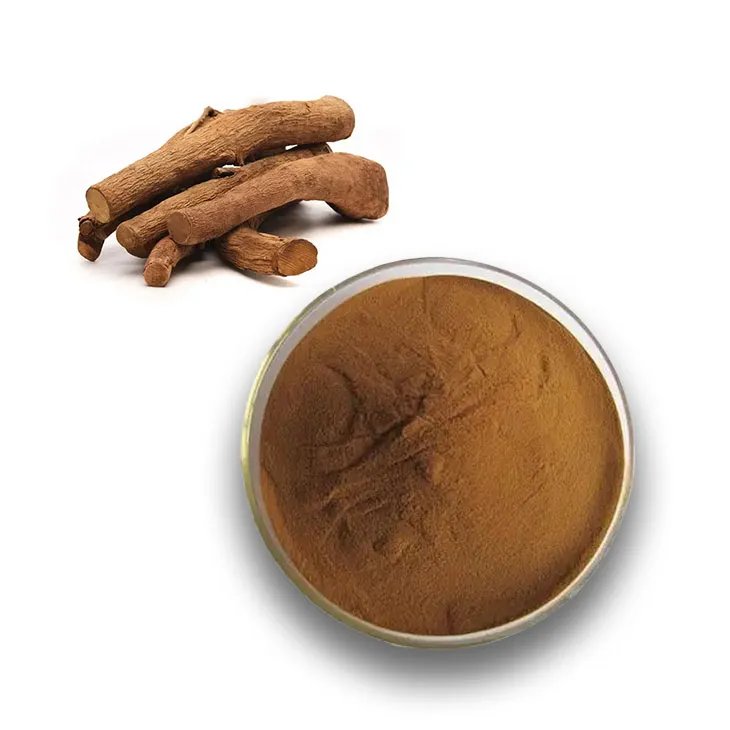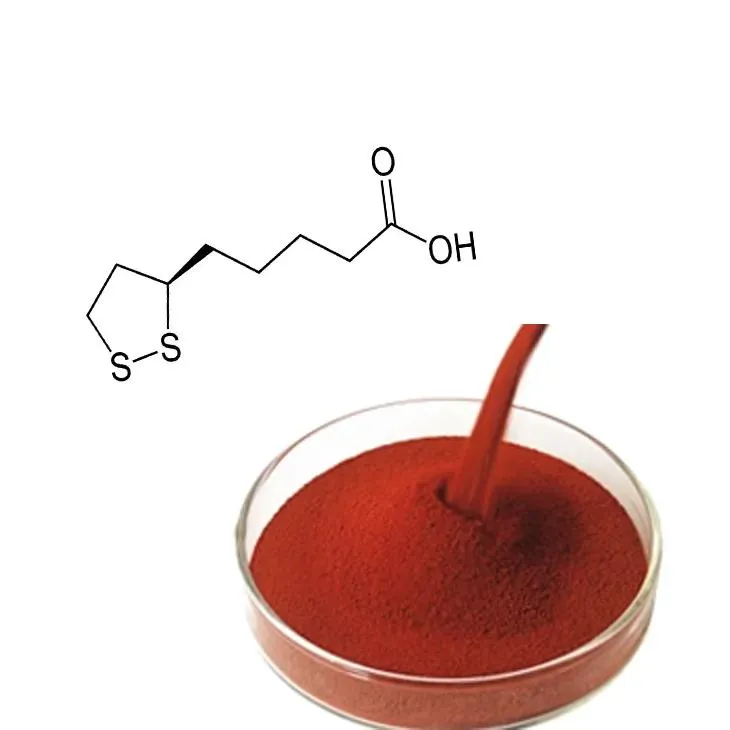- 0086-571-85302990
- sales@greenskybio.com
Genistein products: Which extraction technologies should your enterprise invest in?
2024-12-10

1. Introduction to Genistein
Genistein is a naturally occurring compound that has gained significant attention in various industries. It belongs to the class of isoflavones and is found predominantly in plants such as soybeans. Genistein has been associated with a wide range of potential health benefits, which has led to its increasing use in the nutraceutical and pharmaceutical industries. In addition to its role in health - related applications, it also has applications in the cosmetics industry due to its antioxidant properties.

2. Importance of Genistein in Different Industries
2.1 Nutraceutical Industry
In the nutraceutical industry, genistein is highly valued for its potential role in promoting health. Research has suggested that it may have beneficial effects on bone health, as it has been shown to interact with estrogen receptors in the body. This property makes it a potential candidate for the prevention and treatment of osteoporosis. Additionally, it has been studied for its anti - cancer properties. Some studies have indicated that genistein may inhibit the growth of cancer cells, particularly in breast and prostate cancers. As a result, many nutraceutical companies are interested in incorporating genistein into their products, such as dietary supplements.
2.2 Pharmaceutical Industry
The pharmaceutical industry is also exploring the potential of genistein for drug development. Its ability to modulate various biological processes makes it an attractive target for the development of new drugs. For example, its anti - inflammatory properties may be harnessed to develop drugs for the treatment of inflammatory diseases. Moreover, its role in cell signaling pathways offers opportunities for the development of drugs that can target specific cellular functions. However, in order to utilize genistein effectively in pharmaceutical products, it is necessary to extract it with high purity and in sufficient quantities.
2.3 Cosmetics Industry
In the cosmetics industry, the antioxidant properties of genistein are of great interest. Antioxidants are essential for protecting the skin from damage caused by free radicals, which are generated by environmental factors such as UV radiation and pollution. Genistein can be incorporated into skincare products such as creams, lotions, and serums to help prevent premature aging of the skin, reduce wrinkles, and improve skin elasticity. As consumers are increasingly aware of the importance of using products with natural ingredients, the demand for genistein - based cosmetics is on the rise.
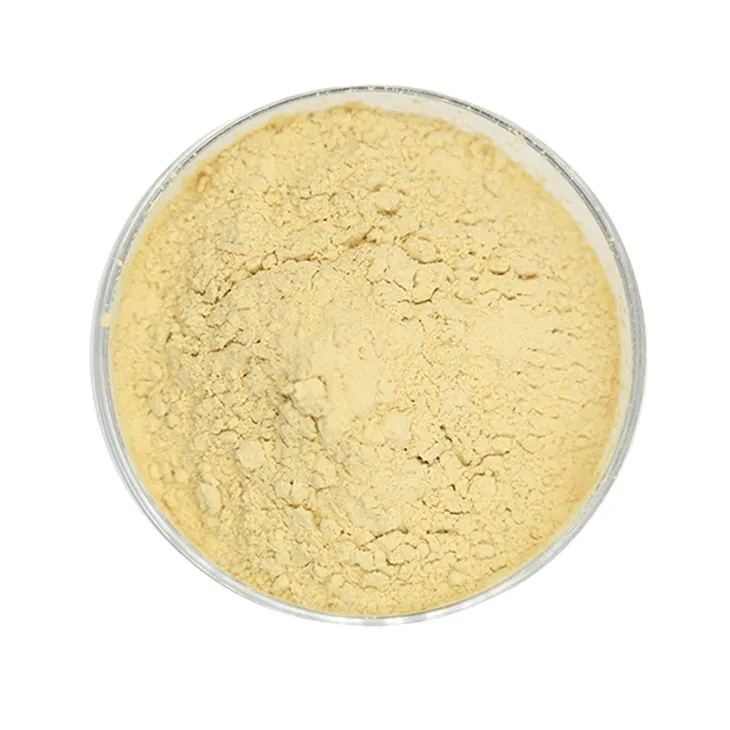
3. Solvent Extraction
3.1 Principle and Process
Solvent extraction is one of the most widely used methods for extracting genistein from plant sources. The principle behind this method is based on the solubility of genistein in a particular solvent. In this process, the plant material containing genistein is first ground into a fine powder. Then, it is mixed with a suitable solvent, such as ethanol or methanol. The mixture is stirred or shaken for a period of time to allow the genistein to dissolve in the solvent. After that, the solvent containing the dissolved genistein is separated from the solid residue through filtration or centrifugation.
3.2 Efficiency
Solvent extraction can be relatively efficient in extracting genistein when the appropriate solvent and extraction conditions are chosen. It is capable of extracting a significant amount of genistein from the plant material. The efficiency of this method can be optimized by adjusting factors such as the solvent - to - sample ratio, extraction time, and temperature. For example, increasing the extraction time or temperature within a certain range can enhance the extraction yield of genistein.
3.3 Drawbacks
Despite its efficiency, solvent extraction also has some drawbacks. One of the main issues is the use of organic solvents, which can be hazardous to the environment and human health. The disposal of solvent waste requires proper handling to prevent pollution. Additionally, some solvents may also extract other unwanted compounds along with genistein, which may require further purification steps. Another drawback is that the extraction process can be time - consuming, especially when high purity of genistein is required.

4. Microwave - Assisted Extraction
4.1 Principle and Process
Microwave - assisted extraction (MAE) is a relatively new extraction technique for genistein. The principle of MAE is based on the use of microwave energy to heat the plant material and the solvent simultaneously. In this process, the plant material and the solvent are placed in a microwave - transparent vessel. When the microwave energy is applied, the molecules in the plant material and the solvent are excited, which leads to an increase in temperature. This rapid heating promotes the extraction of genistein from the plant material into the solvent. The extraction time in MAE is typically much shorter compared to traditional solvent extraction methods.
4.2 Rapid Extraction Speed
One of the major advantages of MAE is its rapid extraction speed. The use of microwave energy allows for quick heating of the extraction system, which in turn accelerates the extraction process. This can significantly reduce the extraction time, from hours in solvent extraction to just a few minutes in MAE. For companies that need to process large quantities of plant material in a short time, MAE can be a very attractive option.
4.3 Energy - Saving Features
Another advantage of MAE is its energy - saving features. Since the microwave energy is directly absorbed by the plant material and the solvent, it results in more efficient heating compared to traditional heating methods. This means that less energy is required to achieve the same extraction efficiency. In an era where energy conservation is becoming increasingly important, MAE offers a more sustainable option for genistein extraction.

5. Ultrasonic - Assisted Extraction
5.1 Principle and Process
Ultrasonic - assisted extraction (UAE) utilizes ultrasonic waves to enhance the extraction of genistein from plant materials. The principle of UAE is based on the cavitation effect generated by ultrasonic waves. When ultrasonic waves are applied to the extraction system, which consists of the plant material and the solvent, microscopic bubbles are formed and then collapse. These collapsing bubbles create high - pressure and high - temperature micro - environments, which help to break down the cell walls of the plant material and release the genistein into the solvent.
5.2 Enhancement of Extraction Yield
The use of UAE can significantly enhance the extraction yield of genistein. The cavitation effect helps to improve the mass transfer between the plant material and the solvent, allowing more genistein to be extracted. Studies have shown that UAE can increase the extraction yield of genistein compared to traditional solvent extraction methods. Additionally, UAE can also reduce the extraction time to some extent, although not as much as MAE.
6. Comparison of Different Extraction Technologies
When considering which extraction technology to invest in for genistein extraction, companies need to compare the different options available. Here is a comparison of the three main extraction technologies discussed above:
- Solvent Extraction:
- Advantages: Widely used, can be optimized for high extraction yield, relatively simple equipment requirements.
- Disadvantages: Use of organic solvents with environmental and health risks, long extraction time, potential for co - extraction of unwanted compounds.
- Microwave - Assisted Extraction:
- Advantages: Rapid extraction speed, energy - saving, short extraction time.
- Disadvantages: Requires specialized microwave equipment, may not be suitable for all plant materials, initial investment cost may be high.
- Ultrasonic - Assisted Extraction:
- Advantages: Enhances extraction yield, reduces extraction time, relatively simple equipment compared to MAE.
- Disadvantages: May not be as energy - efficient as MAE, cavitation effect may cause some degradation of genistein if not properly controlled.
7. Considerations for Company Investment
When a company is deciding which extraction technology to invest in for genistein extraction, several factors need to be considered:
- Product Requirements:
If the company is targeting the high - purity genistein market, such as the pharmaceutical industry, a technology that can provide high - purity extraction with minimal co - extraction of unwanted compounds may be preferred. For example, if solvent extraction is chosen, additional purification steps may be required to meet the purity standards.
- Production Scale:
For large - scale production, a technology with high extraction efficiency and short extraction time may be more suitable. Microwave - assisted extraction or ultrasonic - assisted extraction may be better options in this case, as they can process large quantities of plant material in a relatively short time compared to solvent extraction.
- Cost - Benefit Analysis:
The cost of equipment, solvents, and energy consumption should be taken into account. Solvent extraction may have lower equipment costs but higher solvent and waste disposal costs. Microwave - assisted extraction may have a higher initial investment in equipment but lower energy costs in the long run. Ultrasonic - assisted extraction may have a moderate cost in terms of equipment and energy consumption.
- Environmental and Regulatory Factors:
Companies need to comply with environmental regulations regarding the use and disposal of solvents. Solvent extraction may face more regulatory challenges due to the use of organic solvents. On the other hand, microwave - assisted extraction and ultrasonic - assisted extraction are generally considered more environmentally friendly options.
8. Conclusion
In conclusion, the choice of extraction technology for genistein extraction depends on various factors such as product requirements, production scale, cost - benefit analysis, and environmental and regulatory factors. Each of the extraction technologies - solvent extraction, microwave - assisted extraction, and ultrasonic - assisted extraction - has its own advantages and disadvantages. Companies need to carefully evaluate these factors before making an investment decision in order to select the most suitable technology for their genistein extraction operations.
FAQ:
What are the main applications of genistein?
Genistein has various applications. In the pharmaceutical industry, it may have potential health - promoting effects such as antioxidant and anti - inflammatory properties. In the food industry, it can be used as a natural ingredient for functional foods. In the cosmetics industry, it may be incorporated into products for its potential skin - related benefits.
What are the advantages of solvent extraction for genistein?
Solvent extraction is widely used for genistein extraction. One of its main advantages is its relatively high efficiency in extracting genistein from the source materials. It can be applied on a large scale and is a well - established method with known procedures and equipment.
What are the drawbacks of solvent extraction?
The drawbacks of solvent extraction include the use of potentially harmful solvents which may require additional steps for solvent removal and disposal. There may also be issues related to solvent selectivity, which could lead to the co - extraction of other unwanted compounds.
How does microwave - assisted extraction work for genistein?
Microwave - assisted extraction works by using microwave energy to heat the extraction system. This rapid heating causes the cell walls of the source material to break more easily, allowing the genistein to be released more quickly into the solvent. It is a relatively fast extraction method compared to traditional methods.
Why is ultrasonic - assisted extraction considered good for genistein extraction?
Ultrasonic - assisted extraction is considered good for genistein extraction because the ultrasonic waves can create cavitation bubbles in the solvent. When these bubbles collapse, they generate high - pressure and high - temperature micro - environments that can enhance the mass transfer process and thus increase the extraction yield of genistein.
Related literature
- Genistein: A Review of Its Potential Health Benefits"
- "Advances in Genistein Extraction Technologies"
- "The Role of Genistein in the Pharmaceutical and Food Industries"
- ▶ Hesperidin
- ▶ citrus bioflavonoids
- ▶ plant extract
- ▶ lycopene
- ▶ Diosmin
- ▶ Grape seed extract
- ▶ Sea buckthorn Juice Powder
- ▶ Beetroot powder
- ▶ Hops Extract
- ▶ Artichoke Extract
- ▶ Reishi mushroom extract
- ▶ Astaxanthin
- ▶ Green Tea Extract
- ▶ Curcumin Extract
- ▶ Horse Chestnut Extract
- ▶ Other Problems
- ▶ Boswellia Serrata Extract
- ▶ Resveratrol Extract
- ▶ Marigold Extract
- ▶ Grape Leaf Extract
- ▶ blog3
- ▶ Aminolevulinic acid
- ▶ Cranberry Extract
- ▶ Red Yeast Rice
- ▶ Red Wine Extract
-
Chia Seed Powder
2024-12-10
-
Senna Leaf Extract
2024-12-10
-
Milk Thistle Extract
2024-12-10
-
Mango flavored powder
2024-12-10
-
Sea buckthorn Juice Powder
2024-12-10
-
Diosmin
2024-12-10
-
Black Garlic Extract
2024-12-10
-
Tongkat Ali Extract Powder
2024-12-10
-
Astaxanthin
2024-12-10
-
Calendula Extract
2024-12-10











